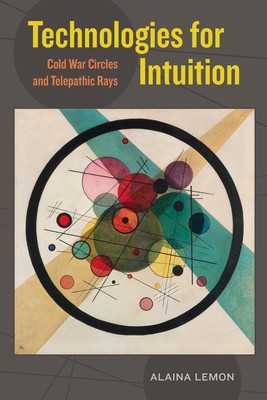
- We will send in 10–14 business days.
- Author: Alaina Lemon
- Publisher: University of California Press
- ISBN-10: 0520294270
- ISBN-13: 9780520294271
- Format: 15.8 x 23.1 x 2.8 cm, hardcover
- Language: English
- SAVE -10% with code: EXTRA
Reviews
Description
Since the Cold War, Americans and Russians have together cultivated fascination with the workings and failures of communicative channels. Each accuses the other of media jamming and propaganda, and each proclaims its own communication practices better for expression and creativity. Technologies for Intuition theorizes phaticity--the processes by which people make, check, discern, or describe channels and contacts, judging them weak or strong, blocked or open. This historical ethnography of intuition juxtaposes telepathy experiments and theatrical empathy drills, passing through settings where media and performance professionals encounter neophytes, where locals open channels with foreigners, and where skeptics of contact debate naifs. Tacking across geopolitical borders, the book demonstrates how contact and channel shift in significance over time, through events and political relations, in social conflict, and in conversation. The author suggests that Cold War preoccupations and strategies have marked theoretical models of communication and mediation, even while infusing everyday, practical technologies for intuition.
EXTRA 10 % discount with code: EXTRA
The promotion ends in 21d.00:39:33
The discount code is valid when purchasing from 10 €. Discounts do not stack.
- Author: Alaina Lemon
- Publisher: University of California Press
- ISBN-10: 0520294270
- ISBN-13: 9780520294271
- Format: 15.8 x 23.1 x 2.8 cm, hardcover
- Language: English English
Since the Cold War, Americans and Russians have together cultivated fascination with the workings and failures of communicative channels. Each accuses the other of media jamming and propaganda, and each proclaims its own communication practices better for expression and creativity. Technologies for Intuition theorizes phaticity--the processes by which people make, check, discern, or describe channels and contacts, judging them weak or strong, blocked or open. This historical ethnography of intuition juxtaposes telepathy experiments and theatrical empathy drills, passing through settings where media and performance professionals encounter neophytes, where locals open channels with foreigners, and where skeptics of contact debate naifs. Tacking across geopolitical borders, the book demonstrates how contact and channel shift in significance over time, through events and political relations, in social conflict, and in conversation. The author suggests that Cold War preoccupations and strategies have marked theoretical models of communication and mediation, even while infusing everyday, practical technologies for intuition.


Reviews